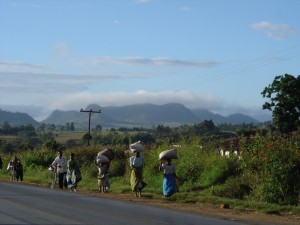Smallholder Demographics
Smallholder Demographics

Smallholder Demographics
More than half of global population growth between now and 2050 is expected to occur in Africa. Africa has the highest rate of population growth among major areas, growing at a pace of 2.55 percent annually in 2010-2015. More than half of the additional 2.4 billion people projected to be added to the global population between 2015 and 2050 will be added in Africa. As a result, Africa’s share of the global population is projected to grow to 25 percent in 2050, and to 39 percent by 2100. A rapid population increase in Africa is expected even if there is a substantial reduction of fertility levels in the near future, primarily because populations in most regions are quite young. Children under age 15 account for 41 percent of the continent’s population in 2015 and young adults aged 15 to 24 account for an additional 19 percent.
However, population density varies widely across the continent. For example, Malawi’s total population is estimated at 16.4 million, and average population density is approximately 148 persons per km2, making it one of the most densely populated countries in sub-Saharan Africa. By contrast, the population of its larger neighbor to the west, Zambia, is 14.5 million and average population density is only about 19.5 persons per km2, making it one of the most sparsely populated countries in the region. Average landholding size also varies widely in the region, with small size posing additional challenges for rural food security and poverty alleviation. The average landholding size of rural households in Malawi is 0.7 hectares, and in Zambia, it is 2.25 hectares.
United Nations, Population Division: http://www.un.org/en/development/desa/population/
The Snapp Lab is investigating the following promising options:
